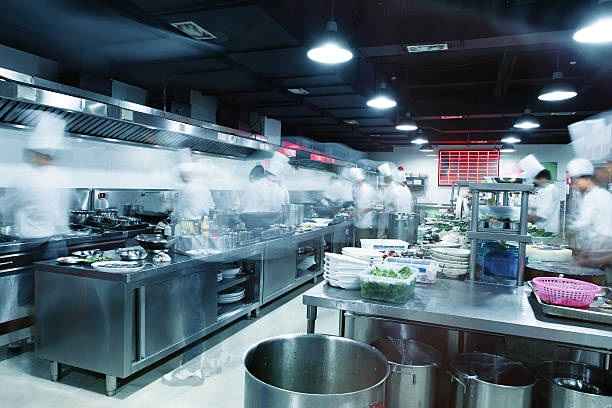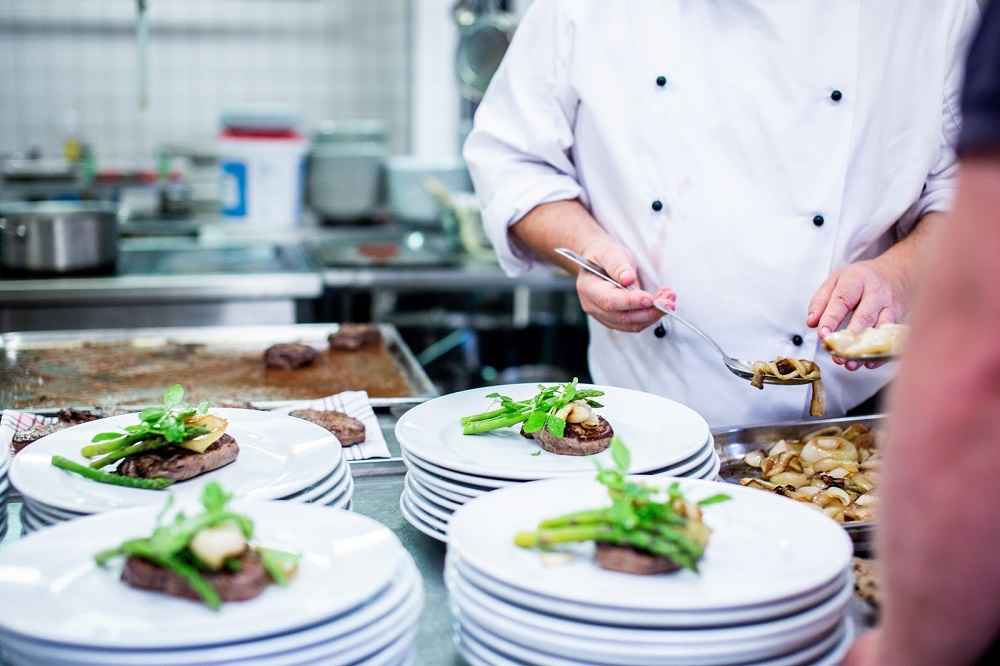Running a restaurant kitchen is no easy task, but with the right planning, organization, and management, it can be a highly rewarding experience.
The success of a restaurant depends heavily on the performance of the kitchen, which is why it is important for restaurant owners and managers to have a comprehensive understanding of how to run a restaurant kitchen.
In this article, we will cover the key components of running a successful restaurant kitchen, including menu planning and development, kitchen organization and layout, staffing and scheduling, inventory management and food costing, and many more.
Key Components for Running a Successful Restaurant Kitchen
Menu Planning and Development
One of the most important aspects of running a restaurant kitchen is menu planning and development. The menu is the heart of a restaurant and the foundation upon which the kitchen operates.
A well-designed menu will appeal to customers and meet their expectations, while a poorly designed menu can drive customers away. When planning a menu, consider the following:
- The type of cuisine offered
- The target market
- The price range
- The level of complexity of the dishes
It is also important to regularly review and update the menu to reflect changing tastes, customer preferences, and seasonal ingredients.

Kitchen Organization and Layout
The kitchen layout and organization play a crucial role in the efficiency and safety of the kitchen. A well-organized kitchen can reduce the risk of accidents and injuries, improve workflow, and increase productivity.
Consider the following when organizing the kitchen:
- The size and layout of the kitchen
- The type of equipment and appliances used
- The flow of food preparation and cooking processes
Having a clear and logical kitchen layout and organization can help ensure a smooth and efficient kitchen operation.
Staffing and Scheduling
The success of a restaurant kitchen also depends on having a strong and well-trained team of kitchen staff. Hiring and scheduling the right staff is essential to ensuring that the kitchen runs smoothly and efficiently.
When hiring kitchen staff, look for individuals who:
- Have relevant experience
- Possess strong communication and teamwork skills
- Are passionate about food and cooking
In terms of scheduling, it is important to consider the following:
- The number of staff needed during peak hours
- The availability of staff
- The budget for staffing
Having the right staff and an effective scheduling system can greatly improve the performance of the kitchen.
Inventory Management and Food Costing
Proper inventory management and food costing are critical components of running a successful restaurant kitchen. By managing inventory effectively, restaurant owners can reduce food waste, control costs, and maximize profits.
To effectively manage inventory, it is important to:
- Regularly track food and supply purchases
- Accurately record and monitor food usage
- Implement effective inventory control procedures
Food costing is the process of determining the cost of each dish on the menu. This information can then be used to set menu prices and ensure that the restaurant is operating at a profit. To accurately determine food costs, consider the following:
- The cost of ingredients
- Labor costs
- Overhead costs
By regularly monitoring food costs and making adjustments to menu prices as needed, restaurant owners can ensure that the restaurant remains profitable.
Food Safety and Sanitation
Food safety and sanitation are essential components of running a successful restaurant kitchen. Not only is it important to maintain a clean and safe working environment, but it is also required by law.
To ensure food safety and sanitation, consider the following:
- Implementing effective food storage and preparation procedures
- Regularly cleaning and sanitizing kitchen surfaces and equipment
- Providing proper training for kitchen staff on food safety and sanitation
- Staying up-to-date with the latest food safety regulations
By taking food safety and sanitation seriously, restaurant owners can ensure that customers are served safe and high-quality food.
Kitchen Technology and Equipment
The latest kitchen technology and equipment can greatly improve the efficiency and performance of a restaurant kitchen.
From specialized kitchen appliances to automated inventory management systems, there are a variety of technology options available to restaurant owners. When choosing and implementing kitchen technology and equipment, consider the following:
- The specific needs of the restaurant
- The budget for technology and equipment
- The impact on kitchen operations
By incorporating the right technology and equipment, restaurant owners can improve kitchen operations and increase efficiency.
Improving Kitchen Operations
Improving kitchen operations is an ongoing process that requires regular monitoring and adjustment. To improve kitchen operations, consider the following:
- Streamlining food preparation and cooking processes
- Implementing effective waste management procedures
- Monitoring and measuring kitchen performance
- Making changes to improve efficiency and reduce waste
By regularly reviewing and improving kitchen operations, restaurant owners can ensure that their kitchen runs smoothly and efficiently.

Conclusion
Running a successful restaurant kitchen requires a comprehensive understanding of some key components.
These key components include menu planning and development, kitchen organization and layout, staffing and scheduling, inventory management and food costing, food safety and sanitation, kitchen technology and equipment, and strategies for improving kitchen operations.
By making informed decisions using these components, restaurant owners can ensure that their kitchen not only runs smoothly and efficiently but also provides customers with high-quality food and exceptional dining experiences.
What is the best way to determine menu prices?
When determining menu prices, it is important to take into account the cost of ingredients, labor, and overhead costs.
Food costing can help accurately determine the cost of each dish on the menu, allowing restaurant owners to set menu prices and ensure profitability.
What are the most important considerations when selecting kitchen technology and equipment?
When choosing and implementing kitchen technology and equipment, restaurant owners should consider their specific needs, budget, and impact on kitchen operations.
It is important to choose technology and equipment that will improve efficiency and meet the needs of the restaurant.
How can I ensure that my kitchen staff are properly trained on food safety and sanitation?
Regular training sessions and updating staff on the latest food safety regulations can help ensure that kitchen staff are properly trained on food safety and sanitation.
Consider providing hands-on training, online courses, and providing access to resources such as food safety guidelines.
What is the most effective way to manage kitchen inventory?
To effectively manage kitchen inventory, restaurant owners should regularly track food and supply purchases, accurately record and monitor food usage, and implement effective inventory control procedures.
By managing inventory effectively, restaurants can reduce food waste, control costs, and maximize profits.
What should be included in a kitchen waste management program?
A kitchen waste management program should include strategies for reducing food waste, properly disposing of waste, and recycling when possible.
Consider implementing composting programs, using reusable containers, and avoiding excess packaging to reduce waste and improve sustainability.
It is also important to regularly train kitchen staff on waste management procedures to ensure their adherence.

